Dahlia 'Paritahi Sunrise.'
Originating in Mexico, this underestimated true tuber is a clade away from the Rosa genus. This does have the advantage of being thorn-less, so yay! We see far too few of them used in gardens and landscapes! Influenced by climate change, the Willamette Valley is becoming very similar to the Latin American ecosystem that originated their traits. They do increasingly well here; storing moisture in their tuberous roots. But, it is the flower, and its styles and patterns of deliberate color, that will make your head explode!
Here is a portrait of Dahlia ‘Razmataz’
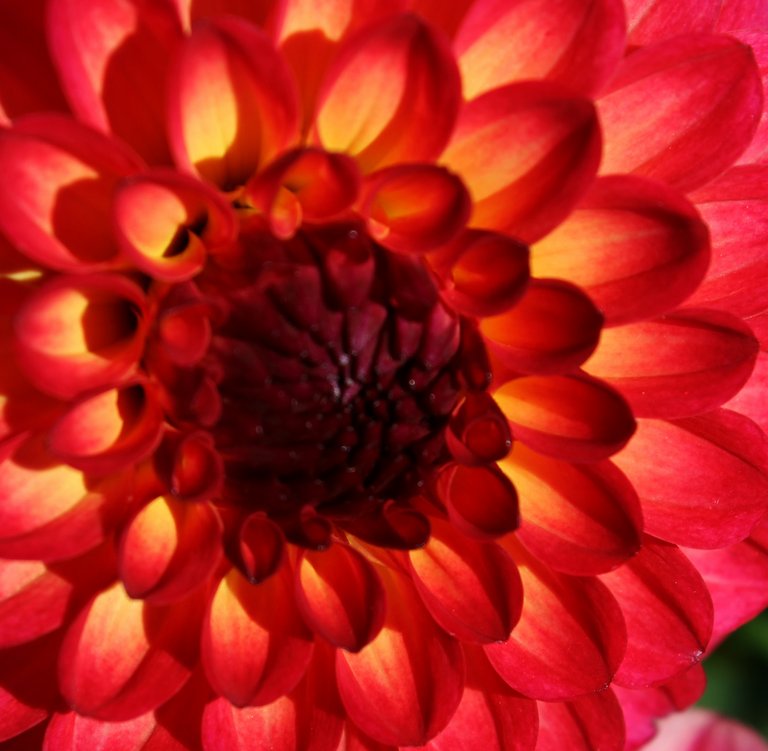
Our gem, Razmataz is what is termed a 'ball' style. There are other descriptors for the different hybrids based mainly on appearance of the flower. Some of them are; formal, informal, decorative, cactus, semi-cactus, ball, dinner-plate. There are some excellent examples from #Gardenia; https://www.gardenia.net/plant-variety/dahlia-types if you've forgotten a few of the types, like I had.
Their beauty and diversity has been harnessed for generations; keeping the most successful hybrids the trophies we see today.
Here is an example of an informal semi-cactus; a portrait of the incomparable Dahlia ‘White Lightning’
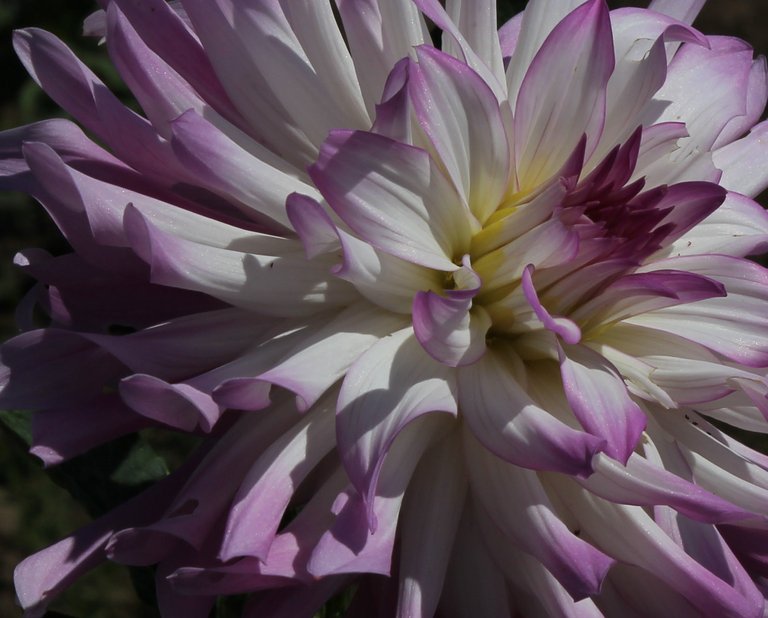
Did I mention, the pollinators love them?! [Source: Me watching the pollinators love them.]

Here's one on a 'Donny C,' an informal cactus style.
Here we see a garden-variety bumblebee, a species in the genus Bombus, pollinating a lovely 'Sharon's #8,' with its distinctive purple stems and red informal flowers.
I would love to thank Frey's Dahlias for letting me shoot their beautiful blooms <3
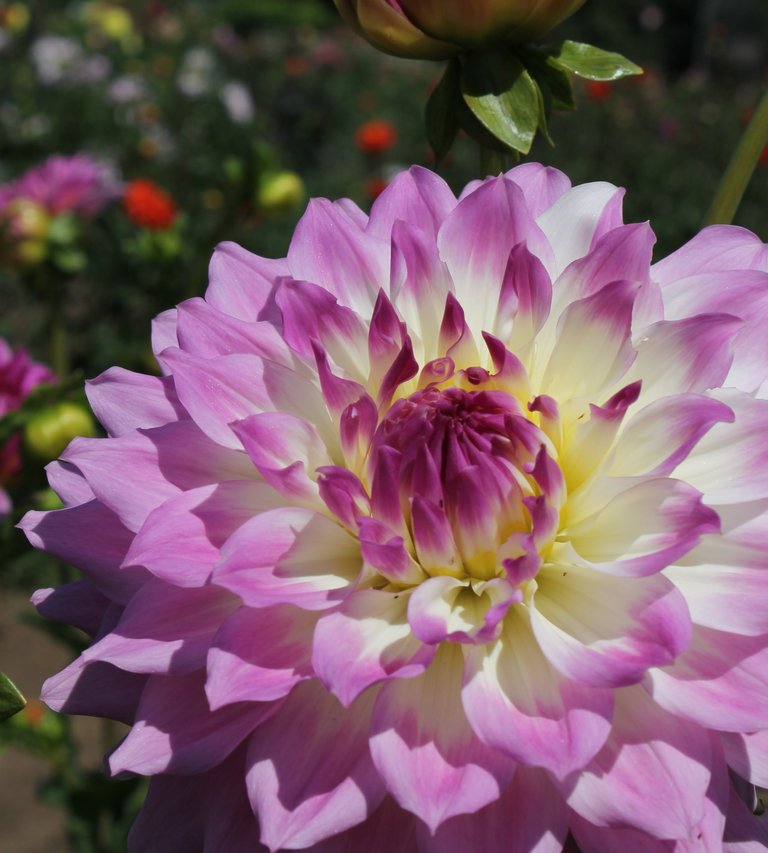
Like this 'April Dawn.'
Follow this - js

Come on over :)
@oregon-trail
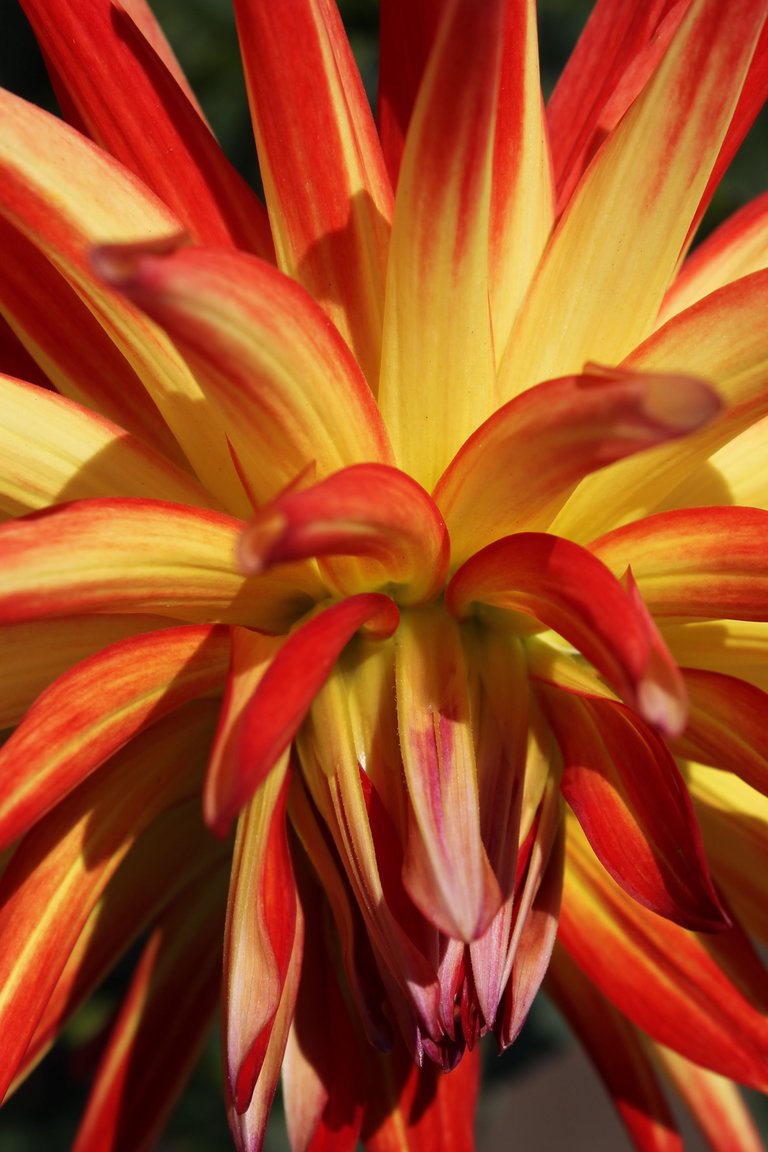
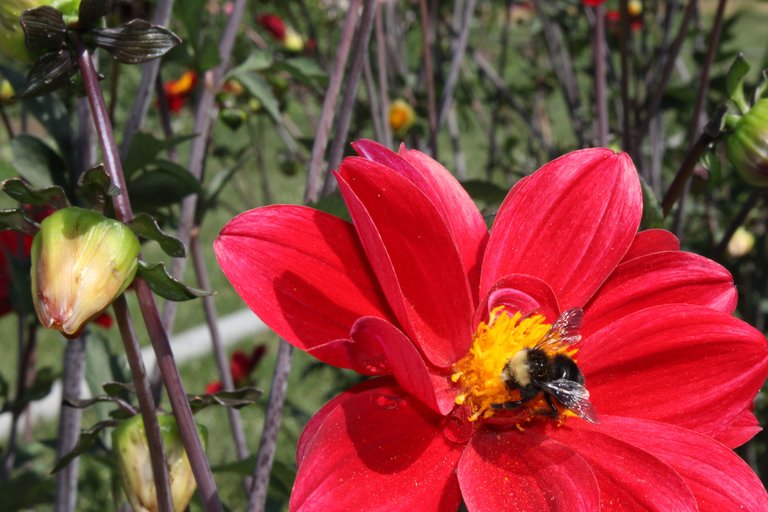
Thank you for the photo! Flowers are really beautiful, but in fact very few people grow them ...
Thank you, hopefully this will encourage more gardeners to include these magnificent bloomers in their Spring Garden Plans :)
:-)